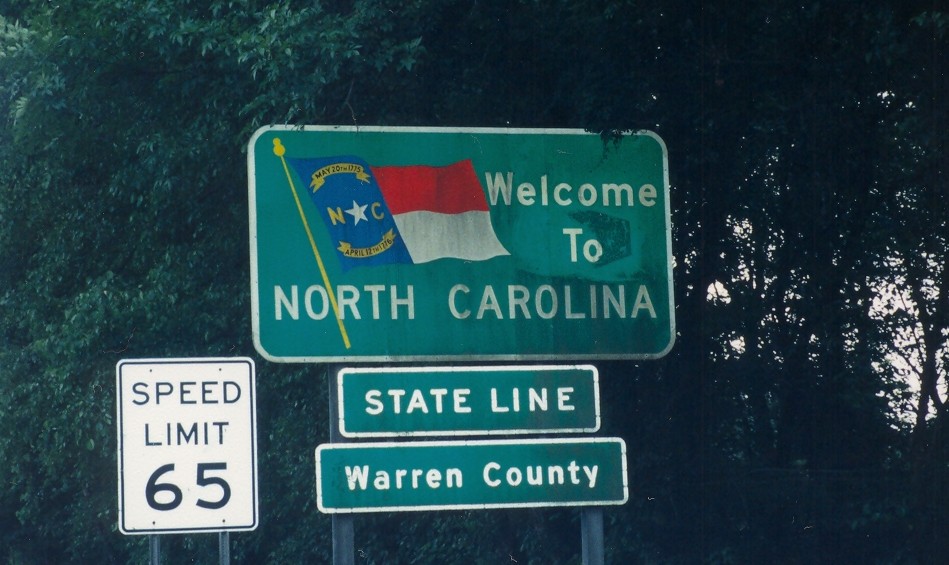One of the most infamous catalysts for the modern environmental justice movement is the Warren County PCB Protests that unfolded in Afton, North Carolina throughout the mid-1980s. These protests defined contemporary modes of environmental justice, highlighting intersections of race and economic status to every human’s right to safe and habitable land. This watershed moment in the history of environmentalism drew attention to a centuries-old issue in America, from the stripping of land from Indigenous nations to contemporary norms perpetuating environmental harm on land occupied by marginalized communities.
The protests began in 1976 when the Ward Transformer manufacturing company illegally dumped 31,000 gallons of polychlorinated biphenyls, more commonly known as PCBs, along two hundred forty miles of roadways in northeastern North Carolina as a way to discard hazardous byproducts that were created during transformer manufacturing.
PCBs are a group of synthetic chemicals containing hydrogen, carbon, and chlorine atoms, historically used for industrial purposes until their complete ban in 1977. PCBs persist within the environment and amass in living organisms, such as people; they are known carcinogens and have shown ties to immune system suppression, neurotoxicity, reproductive issues such as infertility or miscarriages, hormone alterations, genotoxicity, and more during toxicity tests by the CDC. At the time of the illegal dumping, Warren County held around 18,000 residents, who made homes in the rolling hills and pristine lakes, unknowingly contaminated with PCBs.
On July 31st, 1978, local authorities reported unknown substances sprayed along North Carolina Highway 58, simultaneously, reports from 14 other countries mirrored this, leading to investigations. On August 8th, 1978 the unknown substance was revealed to contain high levels of PCBs, leading to criminal investigations that revealed the Ward Transformer Company’s history of illegal dumping that stretched over 240 miles in rural North Carolina.
Despite being a major human rights catastrophe, media attention was extremely limited, contrasting, the Love Canal site’s extensive media attention. Despite these two sites being found within the same week of each other, Love Canal was featured as the front page story of The New York Times, on August 1st, 1978, whilst residents of Warren County begged for government aid. These sites were also never officially labeled as parts of the Superfund program, as their identification was during the program’s development; however, this perpetuated the issue to become even more invisible to the media. For many, the correlation between equitable access to habitable land, socioeconomic status, and race became clear.
Based on the 1980 census, Warren County was ranked ninety-seventh out of one hundred counties in North Carolina for poverty rate–around twenty percent of residents lived below the poverty line. Warren County also had the highest percentage of Black residents per county in the state, more than fifty percent. No longer was this an issue of simply hazardous waste, but rather a pivotal intersection of marginalized identities’ forced subjection of cyclical patterns forming health issues and other disparities.
Four years later, in 1982, the state government announced multiple reconstruction plans to mitigate health hazards; when reviewed by the EPA and state officials, the most suitable option was to relocate 40,000 cubic yards, or over 8,000,000 gallons, of contaminated soil to be buried in a landfill, then capped in Afton, Warren County, North Carolina. Although tests proved that Warren County held a shallow water table, the EPA waved these concerns on June 4, 1979, potentially leaking poisonous contaminants into water sources throughout the county.
Residents were given no forewarning that their town would potentially become the home to millions of gallons of contaminated soil; they were notified two weeks before construction began.
Locals identified the racial and socio-economic marginalization implicit in the decision. The day after Christmas, community members met, contacted local educational and religious leaders, and distributed PCB fact sheets throughout the community. The community continued mobilization through the formation of grassroots organizations such as the Warren County Citizens Concerned About PCBs, and led rallies, sit-ins, and protests, drawing attention to health risks, and lack of governmental transparency in the decision-making process.
On January 4th, 700 community members sardined into a public hearing for eight hours, pushing the racial and political biases involved in the decision. Community members led rallies, prompting a series of confrontations between demonstrators and law enforcement, resulting in over five hundred arrests.
Over the next four years, residents continued to provide evidence of marginalization, oppression, and blatant cyclical patterns perpetuated across American communities. State officials continued to deny a correlation.
Despite the community efforts, in September of 1982, truckloads of hazardous waste began to be dumped in the Afton landfill, marking the relocation of millions of gallons of contaminated soil.
Current residents and future generations of these families were failed by government officials, policy, and the justice system. However, the Warren County PCB protests did not end in defeat; these protests served and continue to catalyze a broader environmental justice movement, illuminating the correlations between race, class, and equitable access to habitable land, basic human rights, and security.
Today, residents in impoverished, rural, and marginalized communities are still more likely to reside in nearby to hazardous waste sites, where 24% of all households living under the poverty line exist within three miles of a site, despite being only 13% of the US population, via EPA reports. Although this systemic issue is far from solved, the Warren County PCB Protests mobilized change for the future, such as the formation of the Office of Environmental Justice 1992 working to amplify voices within environmental policy and the formation of numerous grassroots organizations.

